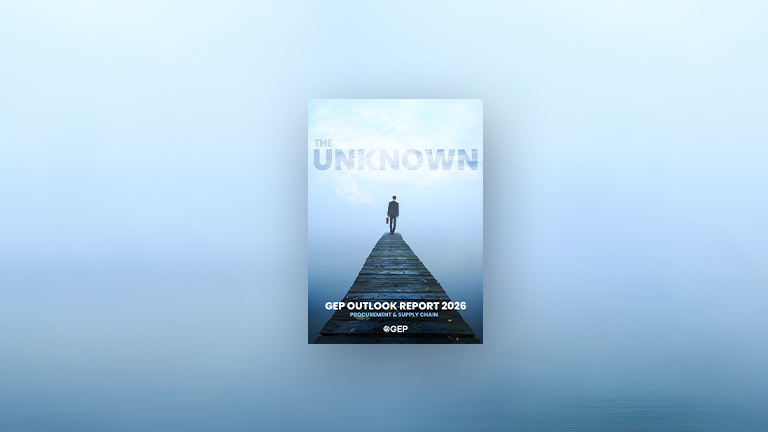
How Do E-Procurement Systems Differ from ERP?
September 10, 2025 | Procurement Software 5 minutes read
Global enterprises are facing growing pressure to do more with less. While increasing efficiency stays their top priority, shockingly many companies still rely on ERP systems that were never built for modern sourcing needs.
This has led to a common question: is an ERP enough, or does your business need a dedicated e-procurement system?
Both systems support procurement. But their design, features, and value are very different. One is built for broad enterprise functions. The other is tailored specifically to the procurement lifecycle.
In this blog, we explore what separates e-procurement systems from ERP. If you're planning to streamline your sourcing, increase transparency, or improve compliance, this breakdown will help you decide what’s right for your team.
ERP alone won’t cut it, see why e-procurement is the smarter choice
Streamline sourcing, boost compliance, and get ROI faster with e-procurement
Technology Streamlining Modern Business Operations
Many companies use ERP systems to manage finance, HR, inventory, and sometimes procurement. However, as procurement becomes more complex, ERPs often fall short. This is where e-procurement platforms come in. They focus only on purchasing and offer better control, transparency, and efficiency.
What Is an ERP System?
An ERP system is a business process management tool. It combines functions like accounting, inventory, and procurement into one integrated system. It acts as a single source of truth for company-wide data.
ERPs are often designed with a finance-first approach. That means procurement becomes one of many functions, not the core focus. The result is limited customization and lower visibility into procurement-specific needs.
What Is an E-Procurement System?
An e-procurement system is built specifically for sourcing, purchasing, and supplier management. It includes tools for requisitions, approvals, PO creation, supplier onboarding, contract management, and invoicing.
The goal is simple. Make buying easier, faster, and more compliant. Unlike ERP modules, e-procurement systems are flexible and designed for procurement teams. They offer real-time insights, supplier collaboration, and automation that ERPs often lack.
Ready to put agentic AI to work in your procurement function?
Get the Agentic AI Playbook to see procurement leaders moving from automation to autonomy.
Key Functional Differences Between ERP and E-Procurement
Let’s break it down by function. This will help you understand where each system shines.
Focus and Purpose
E-Procurement:
Procurement is the primary focus. Every feature is designed to improve sourcing, compliance, and efficiency.
ERP:
Procurement is secondary. Most ERP systems are built around finance, with procurement features added later.
User Focus
E-Procurement:
Made for procurement professionals. Interfaces are intuitive and workflows match day-to-day tasks.
ERP:
Built for enterprise-wide users. Procurement features often require more training and customization.
Scope of Operations
E-Procurement:
Covers the full procure-to-pay cycle. This includes sourcing, supplier onboarding, catalog management, contract lifecycle, and invoicing.
ERP:
Handles basic purchasing functions. For example, PO creation and invoice processing. Anything beyond that may need third-party add-ons.
Procurement Process
E-Procurement:
Provides tailored workflows, approvals, and automation. Helps reduce cycle times and prevent maverick spend.
ERP:
Often lacks flexibility. Approval routing and exception handling may need manual intervention or IT support.
Integration Capabilities
E-Procurement:
Easily integrates with ERP, finance, and supplier systems. Modern e-procurement tools offer APIs and plug-ins for faster deployment.
ERP:
Harder to customize. Integrations require more effort and come with higher costs and longer timelines.
Cost Efficiency and ROI
E-Procurement:
Delivers faster ROI. Savings come from automation, improved compliance, and better supplier management.
ERP:
High upfront cost. Returns take longer and depend on how well the procurement module meets specific needs.
Real-Time Supplier Collaboration and Transparency
E-Procurement:
Suppliers can log in to portals, receive POs, update delivery timelines, and upload invoices in real time. This improves accuracy and trust.
ERP:
Limited supplier interaction. Communications often happen over email or outside the system.
Flexibility and Customization in Business Growth
E-Procurement:
Grows with your business. You can add modules like contract lifecycle management or spend analytics as needed.
ERP:
Rigid structure. Customization is possible, but it’s time-consuming and expensive.
Compliance, Audit Trails, and Risk Management
E-Procurement:
Built-in controls ensure policy compliance. Systems log every action for full audit trails. Risk alerts flag issues early.
ERP:
Audit trails are basic. Compliance depends more on user discipline than system controls.
Use Cases: When to Choose E-Procurement Over ERP?
You may already use an ERP. But if your procurement team faces growing challenges, it’s time to consider e-procurement. Choose an e-procurement system when:
- You manage many suppliers and contracts
- Manual approval processes slow you down
- Maverick spend is hurting compliance
- You want more control over sourcing decisions
- Your team needs real-time visibility into spend
These situations demand tools that are built for procurement, not tacked on to finance systems.
Can E-Procurement Systems Integrate With ERP?
Yes. In fact, the best setup is often a combination of both. Let your ERP handle core business functions. Use an e-procurement platform for the purchasing lifecycle.
Integration helps data flow between systems. Purchase orders, invoice approvals, and budgets stay aligned. You get the best of both worlds—financial oversight from your ERP and procurement efficiency from your e-procurement system.
Best Practices for Implementing E-Procurement With ERP
If you're thinking of adding e-procurement to your tech stack, here are a few tips:
- Start with clear goals. Know what you want to improve—cycle time, compliance, or cost savings
- Map current workflows. Identify bottlenecks in your existing ERP procurement process
- Choose a system that fits. Look for an e-procurement platform that integrates smoothly with your ERP
- Get buy-in early. Bring procurement, finance, and IT together from the start
- Train users well. A user-friendly tool is only helpful if people know how to use it
- Monitor adoption. Track KPIs to ensure the system is used properly and is delivering results
Conclusion
An ERP is a solid foundation for your business. But when it comes to procurement, it often needs support. E-procurement systems fill that gap with tools made for sourcing, supplier management, and spend control.
The difference lies in the focus. ERPs serve many masters. E-procurement systems serve one. If procurement is a priority for your business, specialized tools will give you better results.
FAQs
What are the different types of e-procurement?
The main types include e-sourcing, e-tendering, e-ordering, e-invoicing, and e-auctions. Each serves a specific part of the procurement cycle. You can choose based on your business needs.
What are the 3 common types of ERP?
The three types are on-premise ERP, cloud-based ERP, and hybrid ERP. Each has its own advantages based on your infrastructure and IT strategy.
What are the stages of e-procurement?
The stages are: requisition, approval, sourcing, contracting, ordering, receiving, and invoicing. Modern platforms automate many of these steps.
What does ERP stand for in procurement?
ERP stands for Enterprise Resource Planning. In procurement, it refers to the purchasing module within an ERP that handles basic buying tasks.



